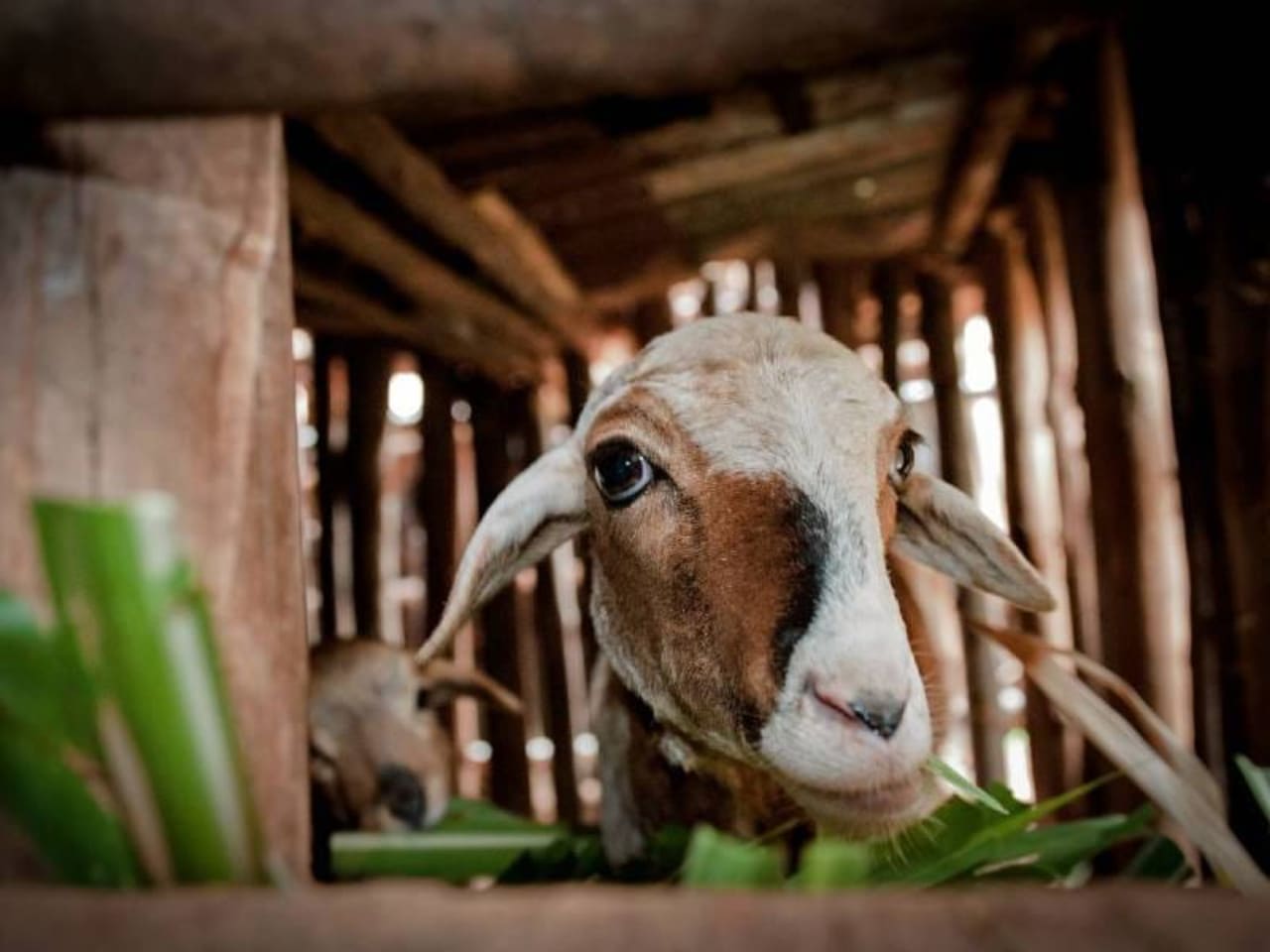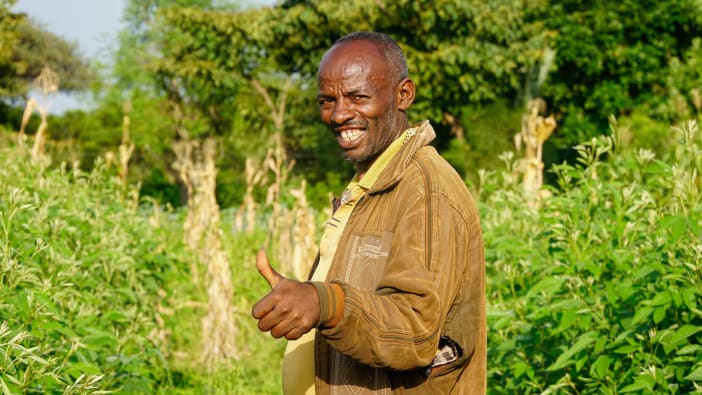One of the main principles of conservation agriculture is permanent ground cover. This reduces the risk of soil erosion, keeps the soil moist and reduces the growth of weeds.
To achieve this, a layer of vegetation can be added to the soil as a mulch, or the base of crops can be left in the fields after harvest. However, when food for animals is in short supply, they may be allowed to graze newly harvested fields or eat the vegetation that could be used as a mulch, leaving the fields bare.
Below are some ideas for overcoming this problem.
- Use any spare land to plant grasses or trees that can be used for animal feed, and/or mulch.
- Dry and store grass and other fodder for the dry season.
- Separate crop and grazing land. Where land is managed communally, establish and enforce grazing rules that everyone agrees with.
- Use fast-growing forage trees as living fence posts.
- Plant a cover crop such as pigeon‑pea and use some of it as animal feed.
- To protect fields, keep animals in an enclosure and bring fodder to them.
- Engage the broader community. If only some people understand the value of keeping the soil covered, it will be difficult to agree how best to manage livestock in crop land. Raise awareness through farm visits, public meetings, radio broadcasts etc.
Neil Rowe-Miller is Agriculture and Livelihoods Technical Adviser (East Africa) for Tearfund and Canadian Foodgrains Bank.
Email: [email protected]









